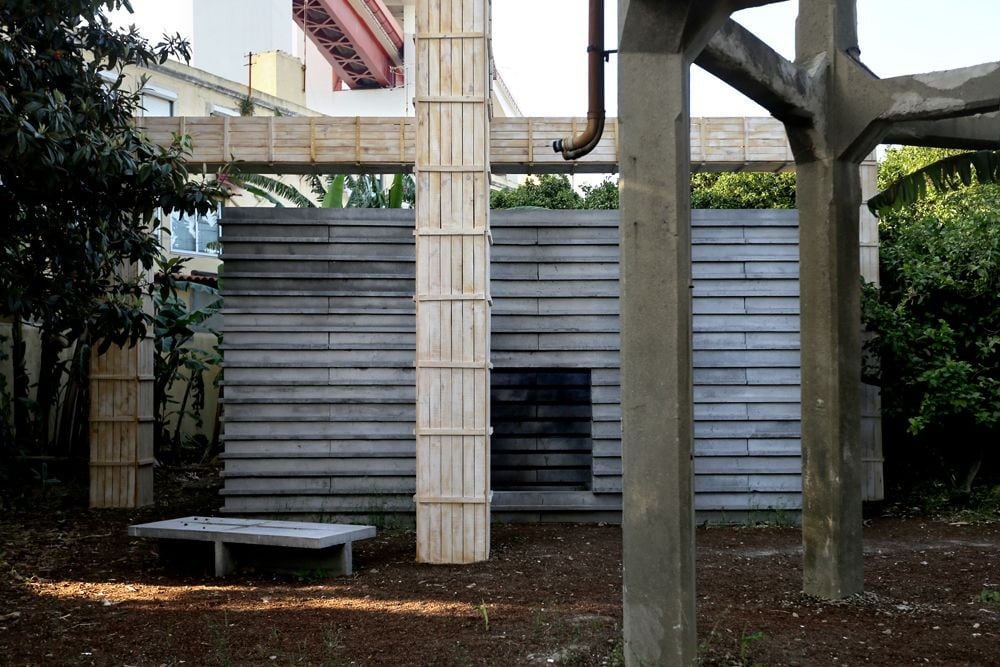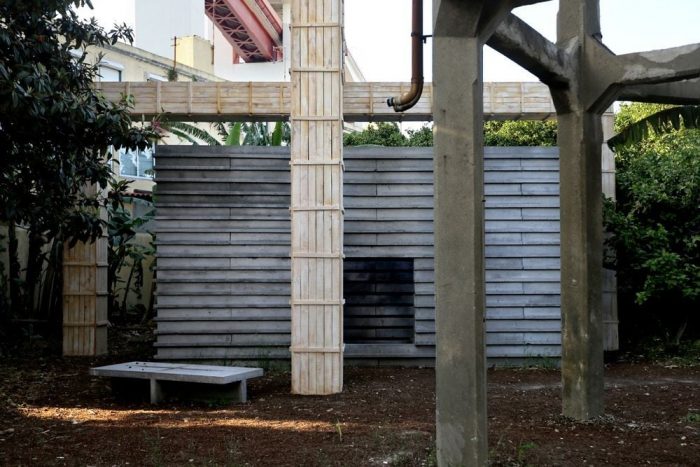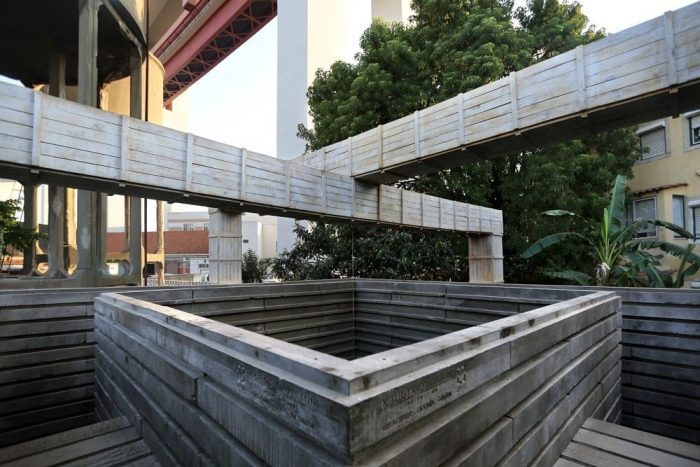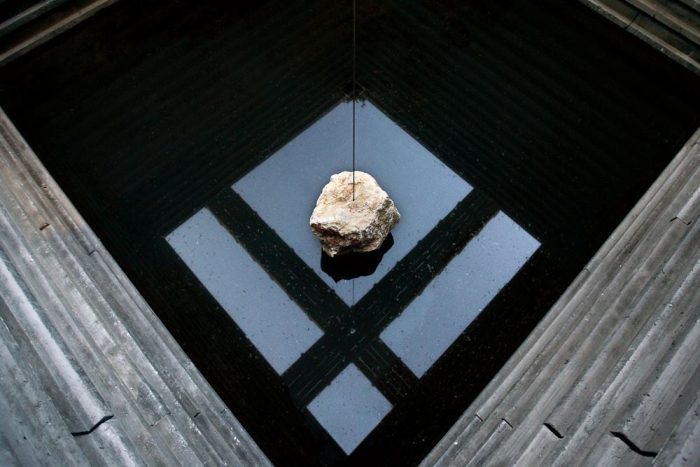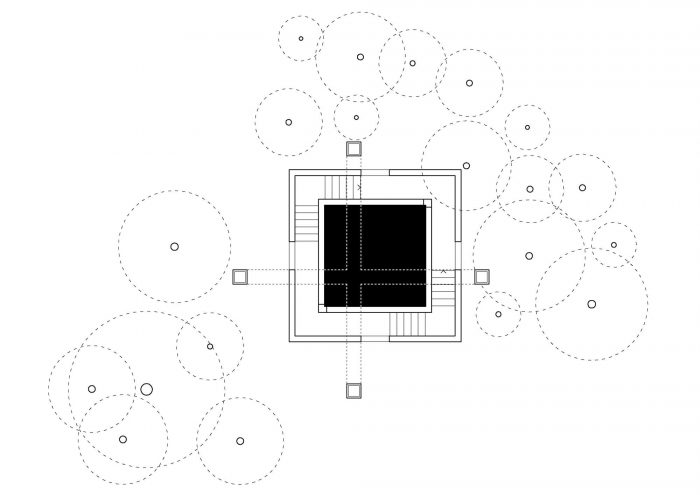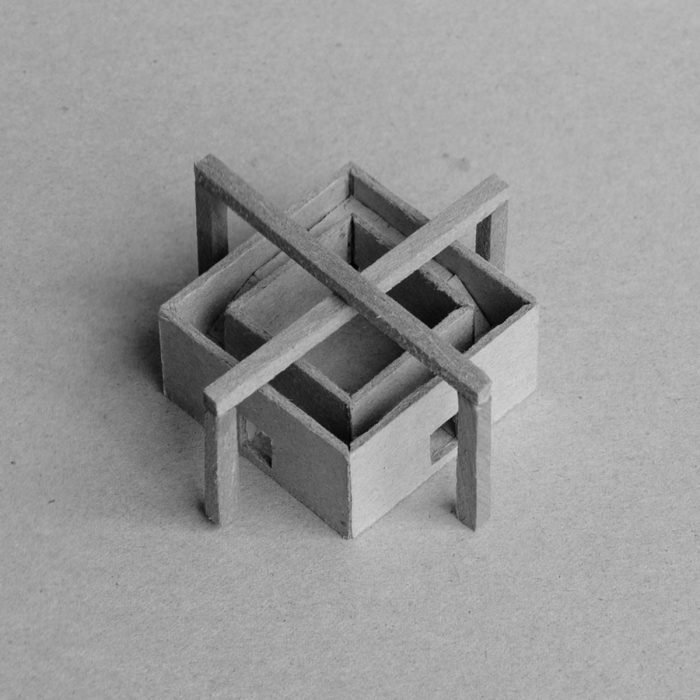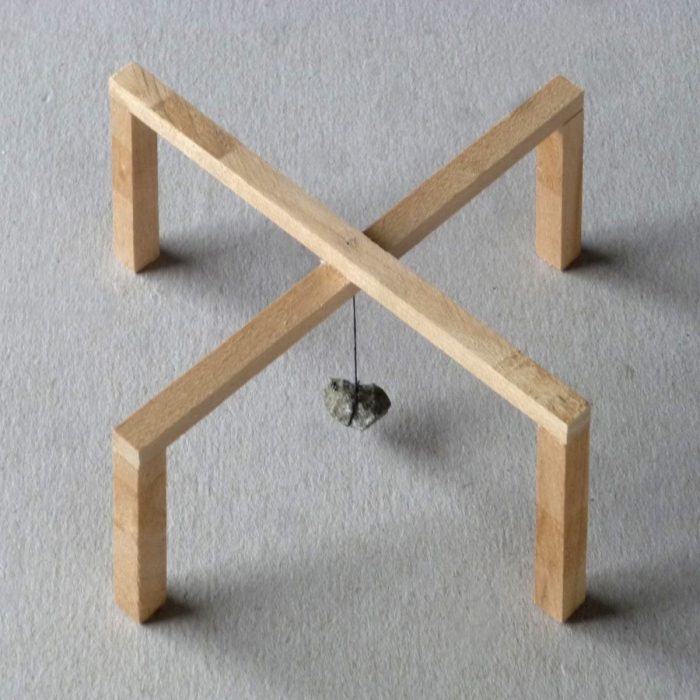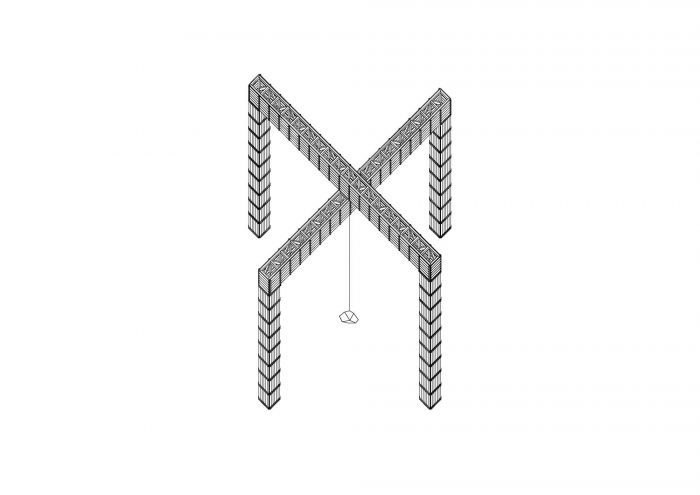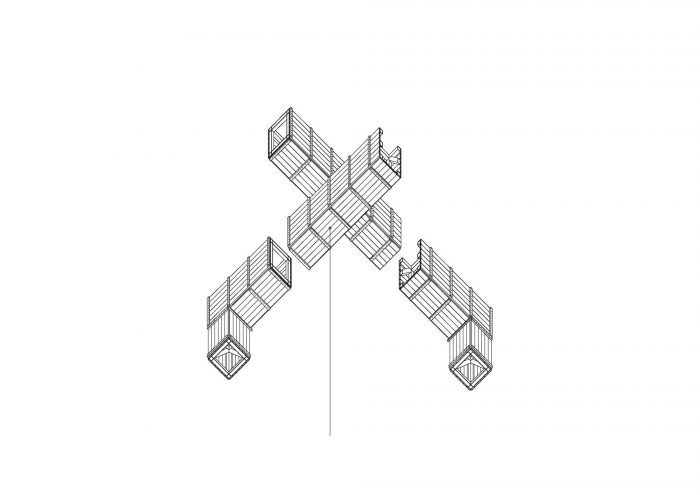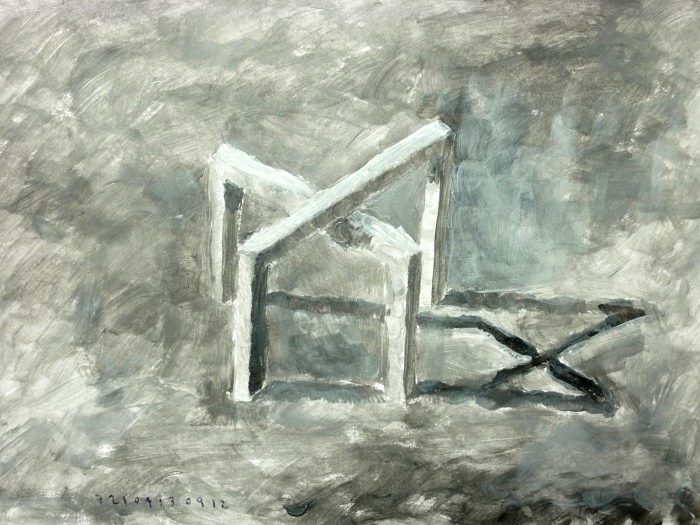这个不知何故谦虚而不朽的作品作为一种简单的对立形式出现–建筑的实质性作用–但以一种时间性和非结论性的方式。它是一个重复的原型图,由两根柱子支撑着一根梁,它们相互垂直衔接,以确定一个十字形的平面。剖面、高度和跨度的维度是为了揭开现有亭子的不对称性。
This somehow modest yet monumental piece appears as a simple form of opposition – that substantial role of Architecture – but in a temporal and non-conclusive manner. It is a duplicated archetypical figure of two columns supporting a beam that are articulated perpendicular to each other so as to define a cross shaped plan. The dimension in section, height and span is meant to unveil the hidden asymmetry of the existing pavilion.
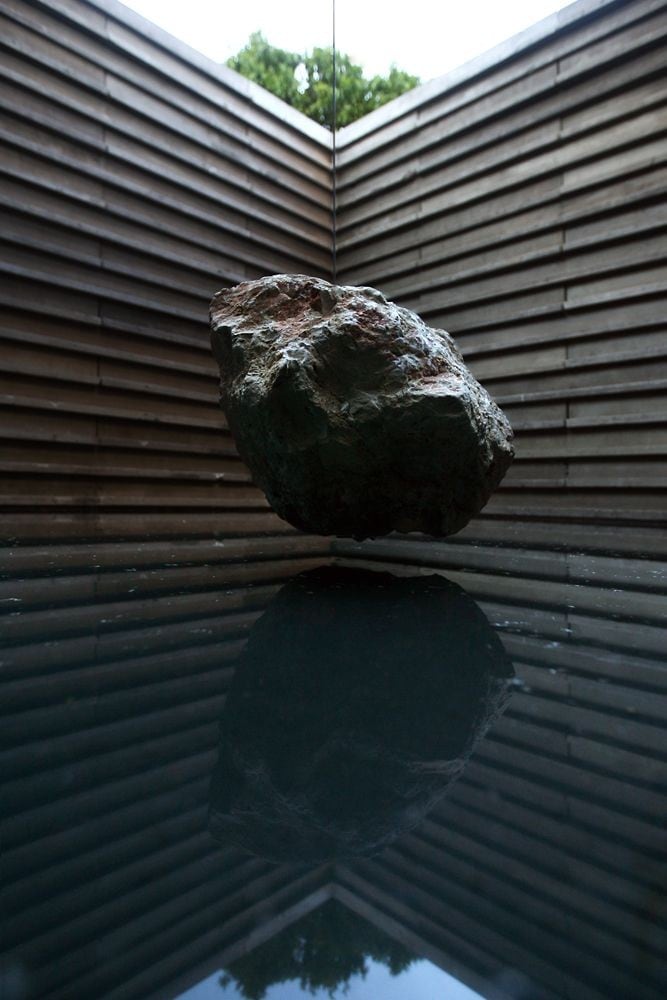
通过对整个室内重力点的明显位移(通过悬挂在水镜上的一个待定的花岗岩围栏来实现),柱子和墙之间的缝隙为东西向的对角线侧翼定义了一个新的和具体的特征。松木的尺寸只有三个:一个是结构框架,另一个是覆层,第三个是连接其他两个。
By a manifested displacement of the very gravitational point of the whole interior (literally materialized by a pending granite bolder that is suspended on top of the water mirror), the gap between column and wall defines a new and specific character for the east-west diagonal flanks. There are only three dimensions for the pine lumber: one for the structural frames, another one for the cladding and the third one to join the other two.
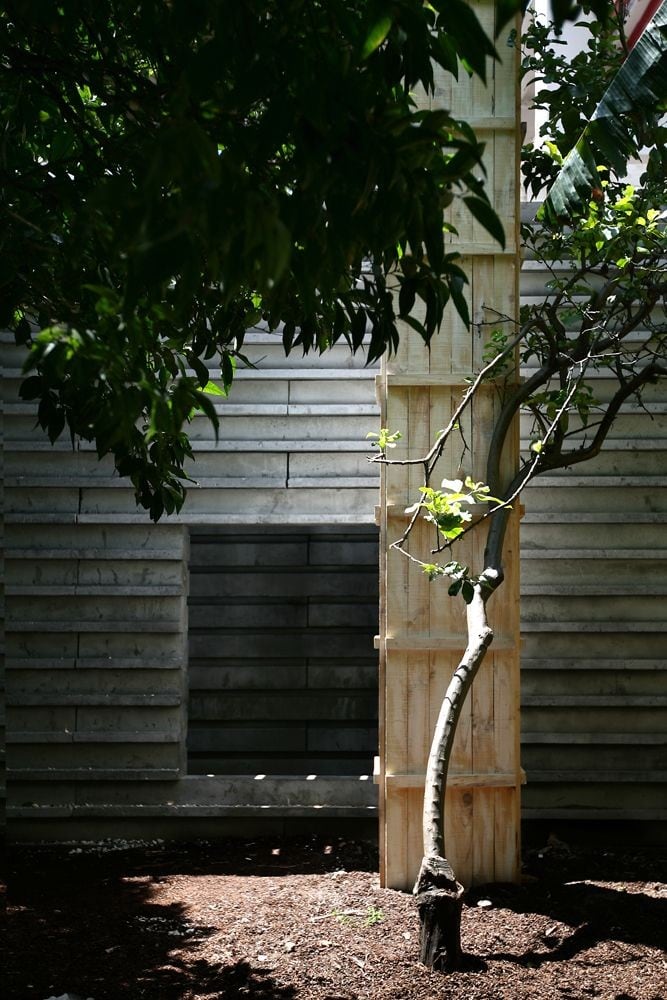
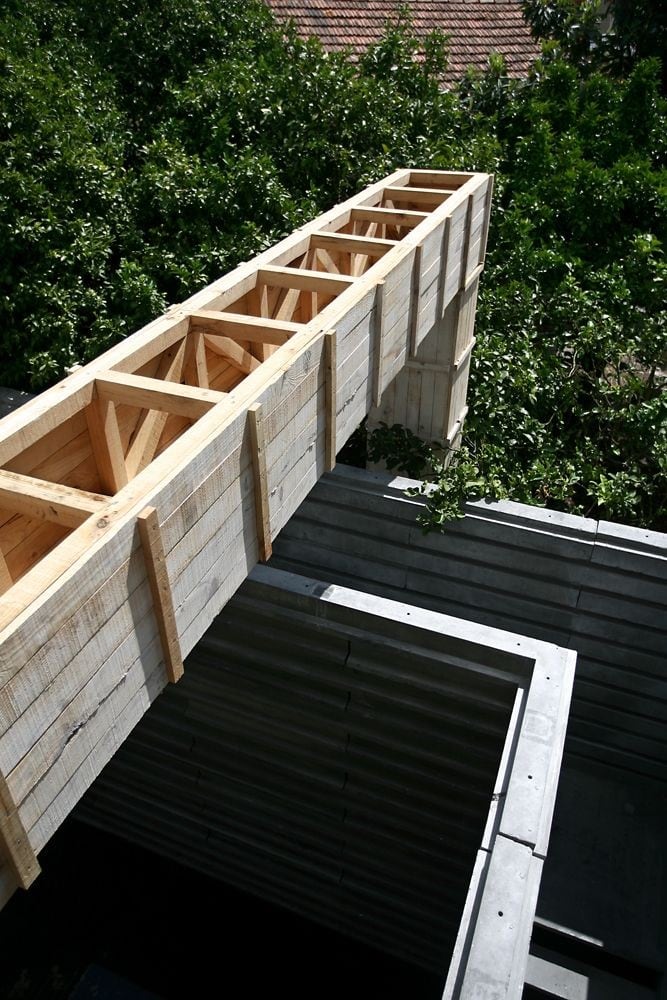
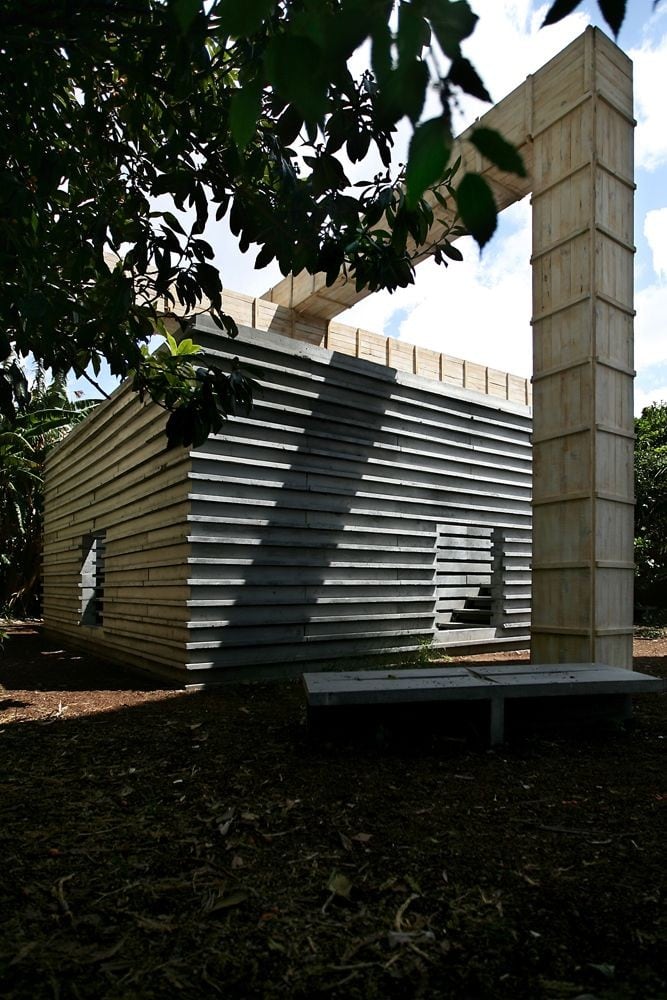
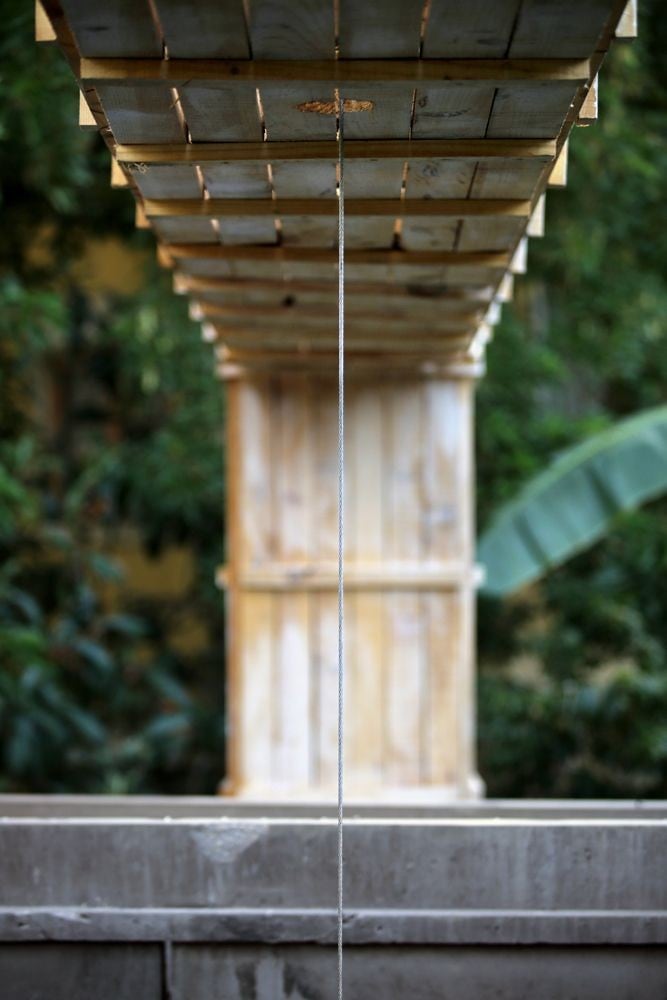
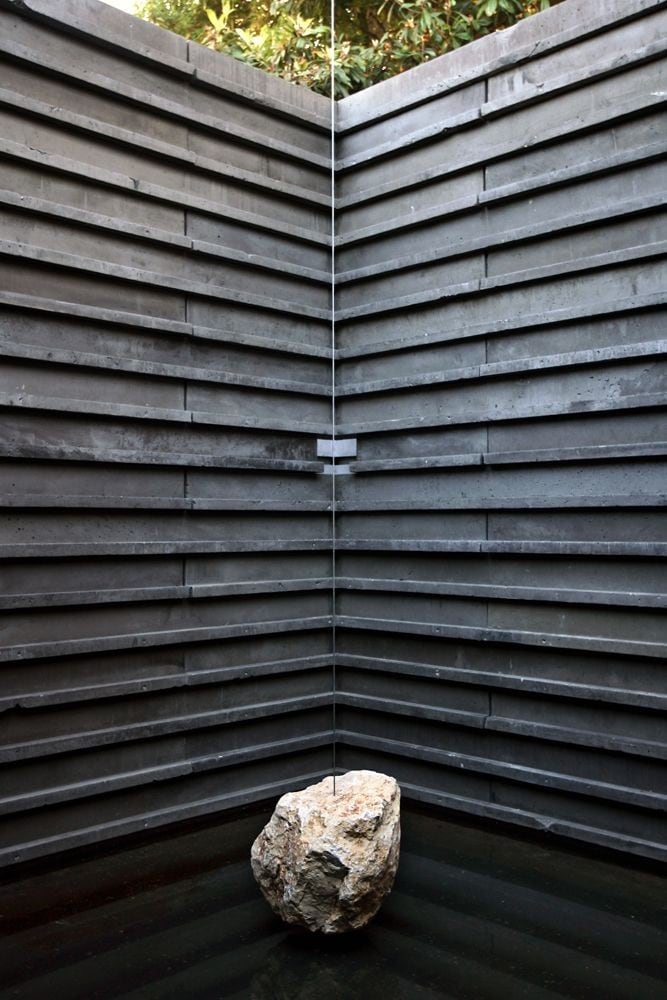
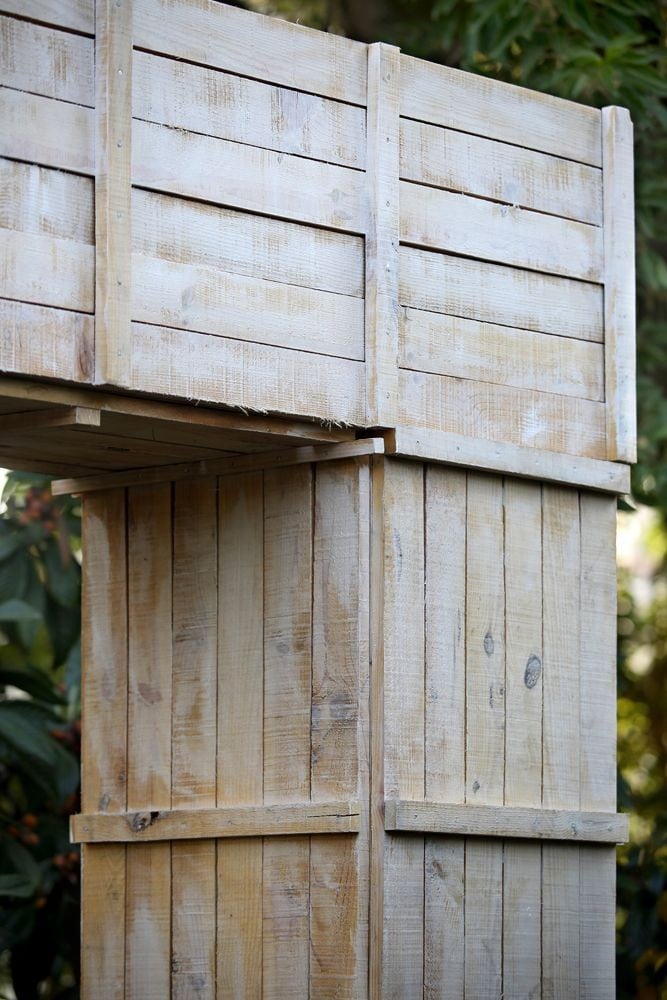
Architects: Pezo von Ellrichshausen
Area : 100 m²
Year : 2013
Photographs :Diana Quintela
City:LISBON
Country:Portugal

